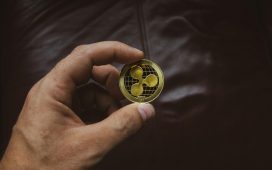Facing tighter restrictions on access to key technologies and an increasingly competitive global scientific landscape, China has launched a major shake-up of its research organizations in pursuit of “self-reliance” in science and technology.
The National People’s Congress last week approved a plan that will refocus China’s Ministry of Science and Technology (MOST) on key efforts to meet top national priorities. It also creates a powerful Central Science and Technology Commission intended to enforce consistent policies across government agencies—and hold them accountable for achieving their objectives.
Many details have yet to be released, but the revamp represents “the most radical change to [China’s] innovation system since the end of the Mao era,” says Richard Suttmeier, a political scientist now retired from the University of Oregon. The goal, says Denis Simon, a China science policy expert at the University of North Carolina, Chapel Hill, is to get China “producing usable, desirable, needed technology that can be put into application sooner rather than later.” But the plan does not slight basic research, which has enjoyed a surge in funding.
In part, the moves represent a response to recent decisions by the United States to restrict sales of advanced computer chips and semiconductor manufacturing equipment to China. The United States is pushing Japan and the Netherlands to adopt similar bans. This led Chinese President Xi Jinping to bluntly tell business executives at a 6 March meeting that China is facing a U.S.-led strategy of “containment, encirclement, and suppression” that poses “severe challenges for China’s development,” according to Xinhua, the official state news agency.
Many Chinese scientists agree. “China indeed has to become more self-reliant because of these restrictions,” says neuroscientist Mu-ming Poo, head of the Chinese Academy of Sciences’s Institute of Neuroscience. The self-sufficiency drive “seems like a natural response from Chinese leadership,” says Emily Weinstein, an analyst at Georgetown University’s Center for Security and Emerging Technology.
The U.S. sanctions have spurred China’s officials to address long-standing and deeper problems in the country’s research environment, says Simon, a former executive vice chancellor at Duke Kunshan University in China. Over the years, China’s government gave MOST, a sprawling agency that oversees a wide range of research efforts, increased responsibility and resources “to build an innovation economy.” But, “Leadership has not been impressed by the results,” Simon says.
One problem is that although MOST set research priorities, allocated money, and evaluated projects (including its own), it had limited control over how other ministries conducted their research. That led to inefficiencies and sometimes lackluster results, analysts have said. The new plan gives agencies greater responsibility for research within their mission areas and creates a more independent mechanism for evaluating results.
Some of MOST’s current programs, for example, will be moved to mission-focused agencies. The Ministry of Agriculture and Rural Affairs will take over agricultural research, and the Ministry of Industry and Information Technology will take responsibility for managing industrial development zones. Such reassignments “seem like a rational response to a changed environment,” Suttmeier says.
The new science and technology commission, meanwhile, will have power to set governmentwide policies and evaluate results. It will sit at the loftiest levels of China’s government, directly under the Communist Party of China (CPC), giving it substantial political heft. The commission’s size and composition remain uncertain, but it will “most likely [have] Xi as the chair,” says Cong Cao, a science policy scholar at the University of Nottingham’s campus in Ningbo, China. The involvement of the CPC signals that “science and technology has become one of the [nation’s] most critical issues, given rising tensions between China and the U.S.,” Cao says.
MOST is likely to retain an important role as the body that will execute the commission’s policy directives, Suttmeier says. Notably, MOST will still manage China’s National Natural Science Foundation, which provides grants to small groups of researchers working on fundamental topics. “China has not been quiet about its struggles to improve in more basic and foundational science,” Weinstein says.
China has been ramping up basic research funding, and Xi has signaled that he intends to continue that trend. “Strengthening basic research is an urgent requirement for achieving high-level scientific and technological self-reliance [and] is the only way to build a world scientific and technological power,” Xi told a CPC committee earlier this year, according to Xinhua.
China’s total R&D expenditures rose 10.4% in 2022 to 3.1 trillion yuan ($448 billion), with support for basic work up 7.4% to 195.1 billion yuan, the National Bureau of Statistics announced in January. Spending on basic research has doubled in 5 years and accounts for 6.3% of total R&D spending. China has set a goal of raising that ratio to 8% by 2025, says Xuemei Xie, an innovation economics specialist at Tongji University.
Even if China meets that goal, however, it would still lag behind the United States, where 17% of total research spending went to basic work in 2019, according to the U.S. National Science Foundation.
China is likely to set a new and higher basic research spending target for 2035, says Zhiqiang Shen, director of the Shanghai Astronomical Observatory. “I am quite confident that China will strengthen basic research in general,” he says, “although no real number is set yet.” He adds that China’s growth in funding for curiosity-driven science has already “ushered in unprecedented opportunities,” in astronomy and other fields where an economic payoff is remote.
Some see the reorganization as a chance for China’s panoply of research institutes to push for more autonomy. “I am calling [on the government] to give more money to institutions like the Institute of High Energy Physics (IHEP) so that we can decide what to do,” says Yifang Wang, IHEP director. He also predicts that despite the emphasis on self-reliance, “international collaboration will not be affected.” Groups from other countries took part in the basic design of IHEP’s proposed Circular Electron Positron Collider, for example, and Wang says IHEP will soon resume organizing international workshops on the collider that were suspended during the COVID-19 pandemic.
Despite the high-level political backing for the reorganization, it is likely to face significant challenges. Individual ministries, for example, will still be able to set their own agendas within limits, potentially fragmenting some research efforts. And private sector investment in basic research is still limited, potentially weakening efforts to move discoveries out of the laboratory.
Still, Simon believes the effort will help focus resources, improve cooperation between national labs and industry, and create better evaluation mechanisms. But what remains to be seen, he says, is whether the new arrangement can produce “a better scorecard when [China] places big bets in the race for greater technological self-reliance.”
With reporting by Bian Huihui.











